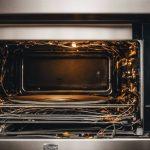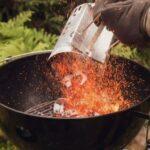Struggling with controlling the temperature on your charcoal grill? This article cuts to the chase, offering quick tips for precise heat control. Learn to turn every BBQ session into a hit, whether you aim for slow smoke or high sear. 🍖🔥
[su_box title=”Summary of Key Points” style=”default” box_color=”#1383C8″ title_color=”#FFFFFF” radius=”3″]Mastering charcoal grill temperature is all about vent control and understanding oxygen’s role. Open vents for high heat, close them partially for low heat, and always create a two-zone fire to manage flare-ups.[/su_box]
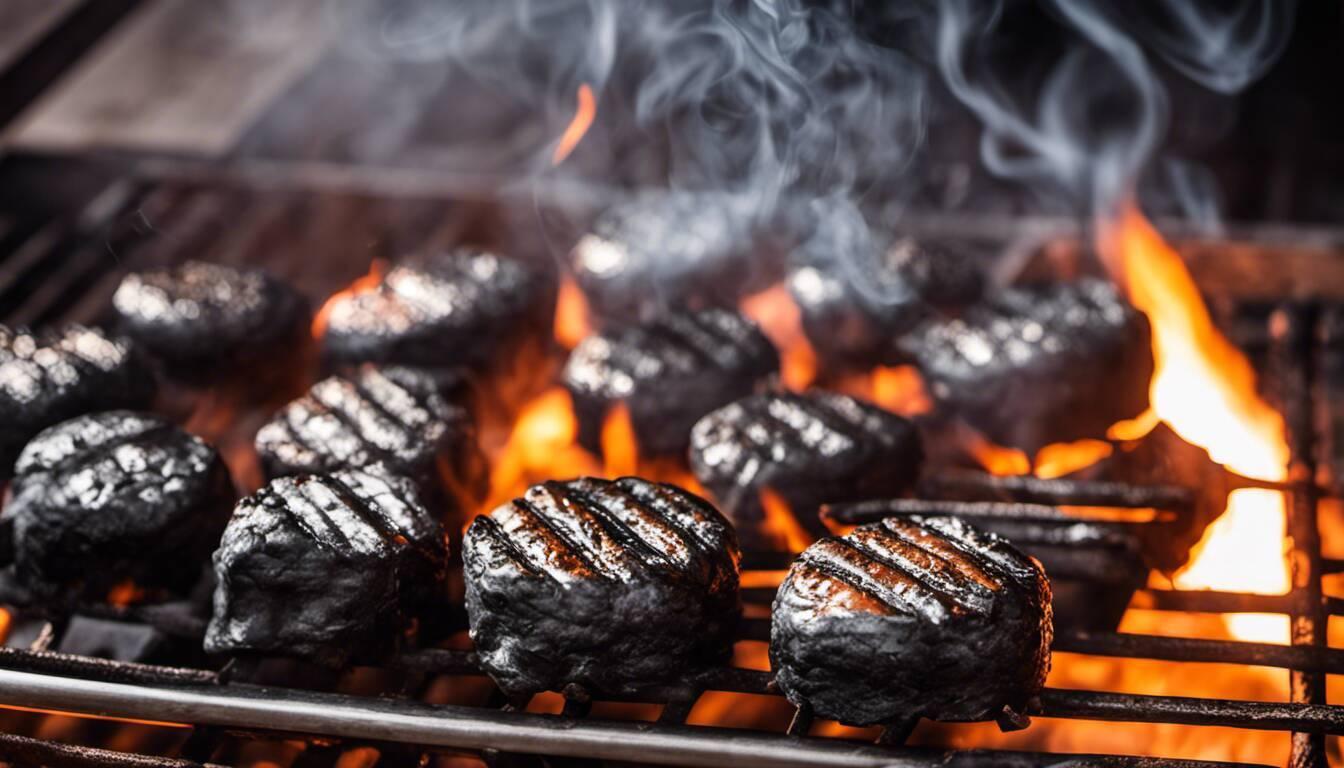
Factors Affecting Grill Temperatures 🌡
Grilling is a great way to make tasty meals and enjoy the outdoors. But to grill food just right, you need to know what affects the heat. Mastering these factors helps you control your charcoal grill better and make mouthwatering dishes every time.
Oxygen Supply 💨
One key factor is the oxygen supply. You need to know how oxygen changes the burn to set the heat of live charcoal coals.
- More Oxygen: Makes coals burn hot and fast 🔥
- Less Oxygen: Cools the coals and makes them burn longer 🌡
The vents on the top and bottom of your grill help with this. They let you change the oxygen flow so you can set the coal heat.
Example: Say you’re grilling juicy steaks and want high heat for good sear marks. Open the vents wide to let in more oxygen, boosting the heat.
Vent Management 🌀
Another key point is how to set the grill vents.
- Closed or Partially Closed Vents: Reduce heat and slow down cooking ⏳
- Partially Open Vents: Needed to keep the fire alive 🔥
Caution: Leave the vents a bit open so the fire doesn’t go out.
Adjusting Charcoal Grill Temperature
Adjustments are often necessary to achieve the perfect cooking temperature on a charcoal grill. If you’re grilling steak or slow-cooking pork, you need heat control for even, well-done food. 🥩🍖
Key Factors for Temperature Control
One key factor in adjusting the charcoal grill temperature is managing the amount of fuel used.
- Initial Charcoal Amount: The quantity of charcoal you first light sets the heat level.
- More Coals: Generate higher temperatures 🔥
- Fewer Coals: Yield lower temperatures 🌡
It’s crucial to find the right balance for your specific cooking needs.
Cooking Goals and Charcoal Quantity
For instance, if you aim for a high-heat grilling session to sear steaks quickly, you would generally use more coals. On the other hand, if you’re planning a long and slow smoke for ribs or brisket, fewer coals would be required.
- High-Heat Goals: Use more coals for quick searing 🔥
- Low-Heat Goals: Use fewer coals for slow cooking 🌡
Charcoal Arrangement Techniques
Changing the layout of your charcoal can also affect how you control heat. A two-zone fire technique is commonly employed to create both direct and indirect heat zones.
- Two-Zone Fire Method: Place all lit coals on one side of the grill and leave the other side free of direct heat.
This layout lets you move food between hot and cool spots based on cooking speed. This method is useful when dealing with flare-ups and food that needs gentle cooking.
Role of Oxygen and Vents
Understanding how oxygen affects the burning process within a charcoal grill is crucial for precise temperature control. More air makes coals burn hot and fast, while less air cools and slows them down.
- Oxygen Flow: Regulated by vents at the top and bottom of most grills
- More Oxygen: Increases temperatures for high-heat grilling 🔥
- Less Oxygen: Decreases temperatures and slows down cooking 🌡
If you’re grilling a thick steak, for example, to achieve the optimal heat level for a quick and flavorful sear, open the vents fully. This extra oxygen supply fuels the coals, resulting in a high-temperature cooking surface.
However, you may encounter situations where you need to reduce heat or slow down cooking. In such cases, partially closing the vents will limit the oxygen flow into the grill, decreasing coal temperature and burning speed.
Modifying Charcoal Quantity
Now that you know how charcoal amount and vent use affect grill heat, let’s look at more tips for precise control.
- To Increase Heat: Use more charcoal and create a uniform layer for even heat 🔥
- To Decrease Heat: Use fewer briquettes or arrange them in a smaller pile for lower, slower heat 🌡
Consider modifying charcoal quantity, like adjusting the flame on a gas stove. Adding more coals is like turning up the heat dial while using fewer coals is similar to reducing the flame intensity.
Each grill model and personal preference may dictate slight differences. Experimentation will help you gain familiarity with your specific grill’s behavior and understand how much charcoal is needed for different cooking techniques.
Practical Techniques for Temperature Control 🌡
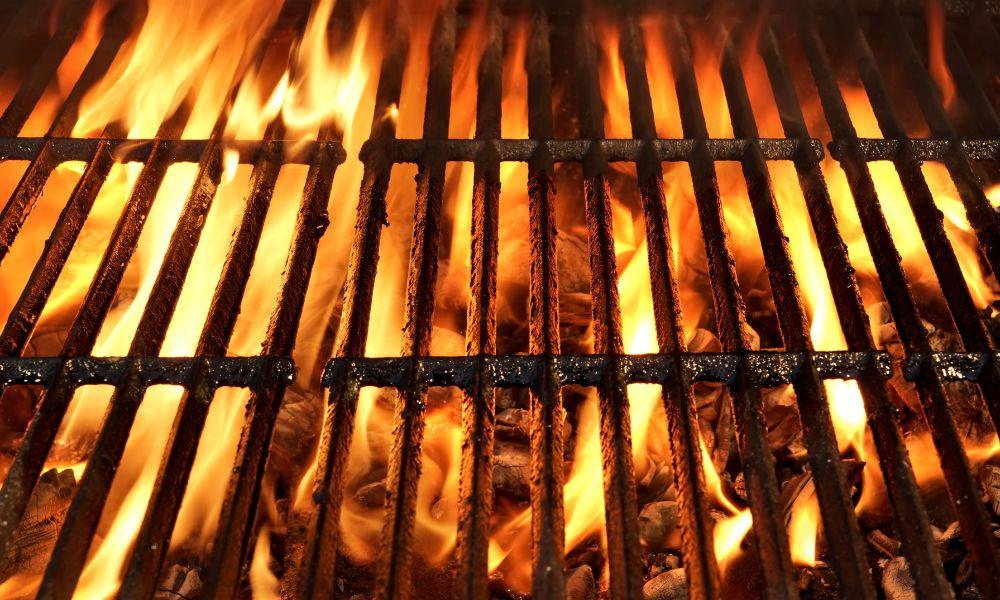
To control heat well on a charcoal grill, you need to know key techniques and factors. Mastering these can enhance your cooking and yield tasty results.
Managing the Grill’s Vents 💨
The top and bottom vents on your grill control airflow. This helps set the heat.
- Open Vents: More oxygen and higher heat 🔥
- Partially Closed Vents: Less oxygen and lower heat 🌡
Example: Open the vents wide if you’re grilling steaks and want high heat for a quick sear.
Creating a Two-Zone Fire 🔥❄️
Setting coals on one side of the grill and leaving the other empty forms two heat zones.
- Direct Heat Zone: Where the coals are placed 🔥
- Indirect Heat Zone: The empty side ❄️
This setup lets you move food between zones to manage flare-ups and cook to your liking.
Studies and Statistics 📊
Studies show open vents can heat a charcoal grill up to nearly 500°F. With vents half-closed, medium heat around 350°F is possible. Slow cooking can happen at about 250°F.
Managing Flare-ups 🚫🔥
Flare-ups often happen when you grill fatty meat or oily dishes. This is due to drips of grease or sauce.
- Prevention: Dry your meat before it hits the grill and trim extra fat.
- Other Tips: Place food at an angle or use grill mats to steer drips away from the heat.
Utilizing the Two-Zone Fire Method 🔄
Using the two-zone method makes sure your steak cooks just right all over.
- Hot Side: For searing or creating a crust 🔥
- Cool Side: For delicate items or slow-roasting ❄️
Items like dividers or charcoal baskets keep hot and cool zones apart. This stops heat from spreading by mistake.
Remember, practice improves your grilling. Try the two-zone method to find the best heat balance for your favorite dishes.
Maintaining Desired Grill Temperatures
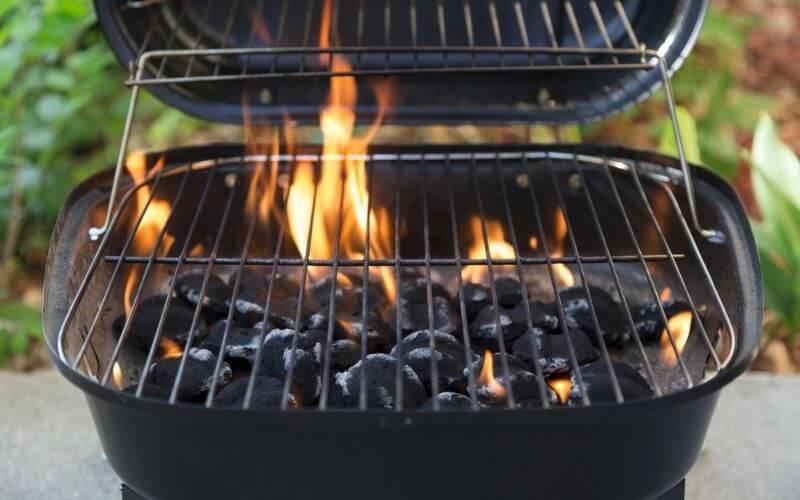
Keeping the right grill heat is vital for tasty, well-cooked food. You’ll need to pay attention and make changes as you grill.
Managing Flare-Ups 🔥
To handle flare-ups, make a two-zone fire. This involves:
- Placing coals on one half of the grill 🍖
- Leaving the other half empty 🚫
Example: Picture this: You’re grilling chicken wings. They often drip fat, which can cause flare-ups. By using the two-zone fire method, you can move the wings away from the heat when flare-ups happen, avoiding burns.
Adding Charcoal for Heat 🌡
If the grill isn’t hot enough, you have two options:
- Add unlit coals to the ones already burning 🔥
- Light new coals in a chimney and add them when ready 🗑
You don’t need lighter fluid; the burning coals will light the new ones. Think of this like stoking a fire. The extra coals make the grill hotter.
Choosing the Right Charcoal 🧱
Different charcoals have different qualities:
- Heat Levels: Some burn hotter than others 🔥
- Burn Time: Some last longer than others ⏳
Keep in mind different charcoals burn at various heats for different lengths of time. This helps you pick the right charcoal for your heat needs.
Safety Precautions 🛑
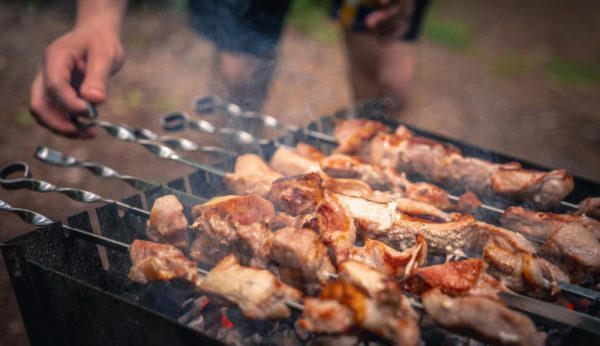
Safety should always be a top priority when grilling. Charcoal grills offer a lot of flavor and are a favorite item among grill masters. Yet, they also have risks. Below are some key safety tips for a safe cooking process:
Using a Thermometer 🌡️
- Why it’s Important: A thermometer helps you keep track of the temp, ensuring the food reaches a safe temperature.
- Types of Thermometers: Choose a type that is easy for you to read and matches the style of your grill.
Understanding Air Flow 🌬️
- Intake Vent and Exhaust Damper: Learn how to use these parts to control air flow, and thus the temp of the coals.
- How it Ties to Safety: Proper air flow prevents the build-up of dangerous gases.
Managing Hot Coals 🔥
- Using a Chimney Starter: A chimney starter offers a safer way to light coals than using lighter fluid.
- Safety Gear: Always use heat-resistant gloves when handling hot parts like the grate.
Grate and Cooking Area 🍖
- Cleaning the Grates: Dirty grates can cause flare-ups, leading to unsafe cooking conditions.
- Cooking Space: Make sure there is enough space around the grill to safely manage your cooking process.
Accessories and Tools 🍴
- Essential Tools: Keep all the needed accessories, like tongs and brushes, within arm’s reach.
- Extra Items: Griddles and other cooking surfaces should be kept clean and in good condition.
Material and Design 🎨
- Quality of Materials: Invest in a well-built grill made of durable materials for long-term safety.
- Design Aspects: Make sure the design of your grill is stable to prevent it from tipping over.
Family and Environment 🏡
- Keeping Family Safe: Make sure to keep kids and pets away from the hot grill.
- Outdoor Space: Make sure your grill is well-placed in your garden or patio, away from flammable materials.
Additional Tips and Tricks 📚
- Recipes and Information: Before starting, read recipes and other information to understand cooking times and temps.
- Simmer and Smoke: Learn the tricks to control the temp for different cooking styles, like simmering or smoking.
By following these safety precautions, you’ll be well on your way to becoming a pro at charcoal grilling.
FAQs 🤔
What are some common mistakes people make while using charcoal grills?
People often make the mistake of not monitoring the temps closely or not understanding the air flow needed for smoking versus high-heat grilling.
Is it safe to use a charcoal grill in a small backyard or patio space?
Space is an important factor. Always ensure adequate space around the grill to avoid any fire hazards. Your backyard or patio should have good ventilation and be free from flammable materials.
What kind of materials should I look for in a charcoal grill?
Look for grills made from durable materials like cast iron or stainless steel. The quality of materials can greatly affect the longevity and safety of the item.
What design features should I consider when choosing a charcoal grill?
The design should offer stability to prevent tipping and ideally include safety tags or certifications from the company to ensure it meets safety standards.
Can I use a charcoal grill in my kitchen?
Using a charcoal grill indoors, including in a kitchen, is not recommended due to the risk of carbon monoxide poisoning and fire hazards.
How do I keep my family safe while grilling?
Make sure to keep kids and pets at a safe distance from the grill. Also, keep all grill accessories out of reach of children.
What is the best style of charcoal grill for smoking?
For smoking, look for a design that allows you to control air flow and temps precisely. This is key to maintaining the low, consistent temperatures required for smoking.
What’s the best way to find more details about charcoal grilling?
The best way to find more details is to read trusted reviews, seek answers from community forums, or consult the company’s website for specific item specifications.


